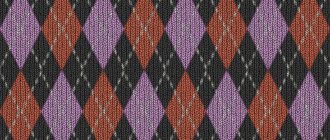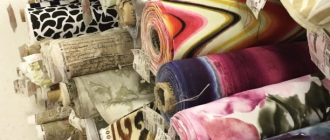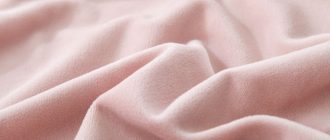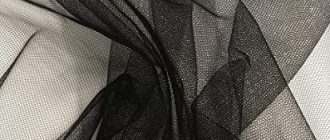Pros and Cons of Using Felt in Your DIY Projects
If you’re considering a DIY project, you might be wondering what felt fabric is. First of all, what is felt, and what makes it different from other materials? You can learn about the pros and cons of using felt in your DIY projects below.
And, don’t forget to check out social media channels for more inspiration. Whether you’re building a quilt, making a tote bag, or just sprucing up your old jeans, you’re sure to find a good source of high-quality felt fabric.
What is felt fabric?
Felt is made of wool blends. It is considered one of the safest types of fabric for clothing. Wool felt is extremely durable and will not wrinkle, even after repeated wear. It is also more abrasion resistant than wool. Wool is also highly biodegradable and does not fray or unravel. Craft felt, on the other hand, is a man-made, 100% synthetic material. It is made from polyester, rayon, and/or a rayon/viscose blend. Craft felt is widely available at all major craft chains and online.
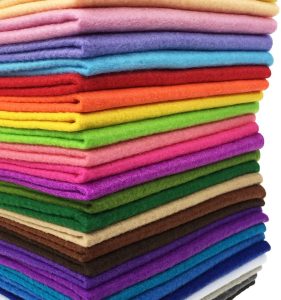
Felt is a nonwoven fabric made of matted fibers and compressed fur. Felt is produced by pressing fibers together and applying heat. Most felt is made from wool, but it can also be made from acrylic, mohair, cotton, and rayon. It is available in a wide variety of colors and sizes and is often associated with a number of uses. Felt is an ideal material for home furnishings and craft projects.
Ancient cultures used felt for blankets and floor mats. In ancient Iran, felt was also used for yurts. Mongols still use felt for yurts, which are still the primary type of dwelling on the Eurasian steppe. Felt’s high thermal insulation and durability make it ideal for many types of applications. Felt was also used by Tibetan mountain people because of its insulating properties. Tibetan holy men wear traditional felt hats.
What is felt made of?
Felt is a fabric made from a natural fiber called wool. Wool fibers are relatively inexpensive. Felt can be used for a variety of uses, including clothing, upholstery, and decorative accessories. The process of making felt begins with a mixing operation, which opens up lumps and blends fiber types. A carding operation is then performed to align fibers in parallel. This is done with a carding machine, which has a cylinder with fine teeth. The fibers are then combed into thin layers known as batts, which range in thickness from half an inch to several inches thick. Batts are constructed from webs of fibers that alternate in direction. This gives felt fabric its uniform strength and stiffness.
Felt is also a popular material for making accessories, clothing, and decorations. It comes in infinite colors, which make it the perfect fabric for holiday decorating. Felt is great for Christmas and Valentine’s Day decorations, and it can be used to add texture to pillows and furniture legs. The thicker felts are great for house shoes and slippers, as they are water-resistant. However, it can be expensive if you need a lot of it for a project.
The benefits of using felt fabric
While there are numerous pros of using felt fabric for roofing, this type of material is not suitable for most projects. Its minimal flexibility makes it a poor choice for most garments, as it does not breathe well and does not flow. Furthermore, felt cannot be returned to its original shape if wrinkling occurs. In addition, it is not as flexible as woven fabrics, and can therefore be costly. Nonetheless, felt is a great choice for certain applications.
One of the advantages of felt fabric is that it is environmentally friendly. Because felt is made of natural fibres, it is a renewable resource. Moreover, felt remains strong and resilient for decades. Another benefit is that it is easy to source high-quality felt fabric for DIY projects. You can check out the benefits of felt fabric and find out more about its features in this article. You can use it for various DIY projects ranging from pillows to clothing accessories.
The cons of using felt fabric
The cons of using felt fabric include shrinking, which can occur with incorrect washing or drying. To avoid shrinkage, try handwashing or washing on a delicate cycle in cold water. When drying your felt project, lay it flat. Because felt has its own unique properties, it is not suitable for all projects. For example, don’t hang it to dry or put it in the dryer on a hot setting. If you’re a beginner sewer, be sure to check with your local fabric store to learn how to properly wash felt.
Another drawback of felt is its lack of sheen or luster. Unlike fleece, felt doesn’t have the sheen or luster of a soft material. However, felt is very good for decorating, and you can easily brand it with care labels if you want. In addition to that, felt is extremely durable. However, it is not very soft and will lose its shape when you wash it. There are several other disadvantages of felt fabric as well.
History of felt fabric
Felt is one of the oldest types of textile and its history dates back to prehistoric times. It was originally created from the wool shed by wild sheep. The wool formed a cohesive fabric, and was used to soften sleeping areas. As the wool grew in abundance, it began to mat and mattify, making the wool even more useful for clothing. Today, felt is still a popular fabric for many uses, including as a decorative and functional material.
The raw materials for felt are spun into long threads. These fibers are passed through a carding machine. The spinning action of the machine helps the fibers become parallel and deliver them in web form. There are at least two carding machines used to produce a thicker felt. Once spun, the stuff must be evenly distributed and uniform. Felt is sandwiched on top of each other to produce the thick web. Then, the felt is finished by being sandwiched between multiple layers of batts.
How to care for and clean felt fabric?
Felt should be kept covered when not in use. Dust is particularly prone to gathering on felt surfaces, so it is a good idea to regularly vacuum. You can also dry clean felt to remove any loose stains or dust. However, you should always keep a clean cloth close at hand to avoid getting the fabric dirty. If you do spill food or liquid on your felt fabric, it is crucial to remove the stain as soon as possible. Otherwise, it could cause the fabric to get dirty and ruined.
FAQ
Main felt fabric colors
- black
- grey
- blue
- red
- purple
- white
- pink
- yellow
- green
Main felt fabric brands
- Ambesonne
- Michael Miller
- Robert Kaufman
- Fabric Merchants
- Lunarable
- SanVera17
- eLuxurySupply
- TELIO
- Cotton + Steel
- Sophia-Art
- ben textiles inc.
- Spoonflower
- APC Fabrics

